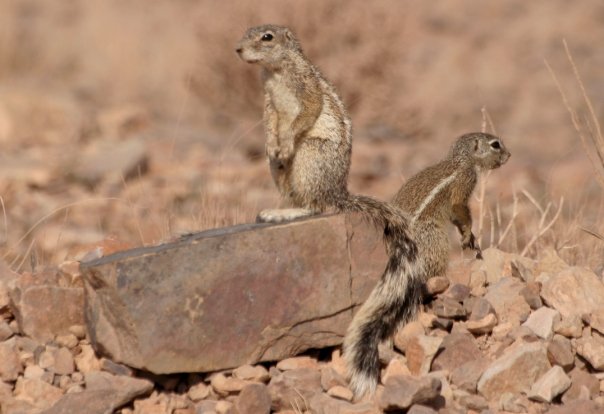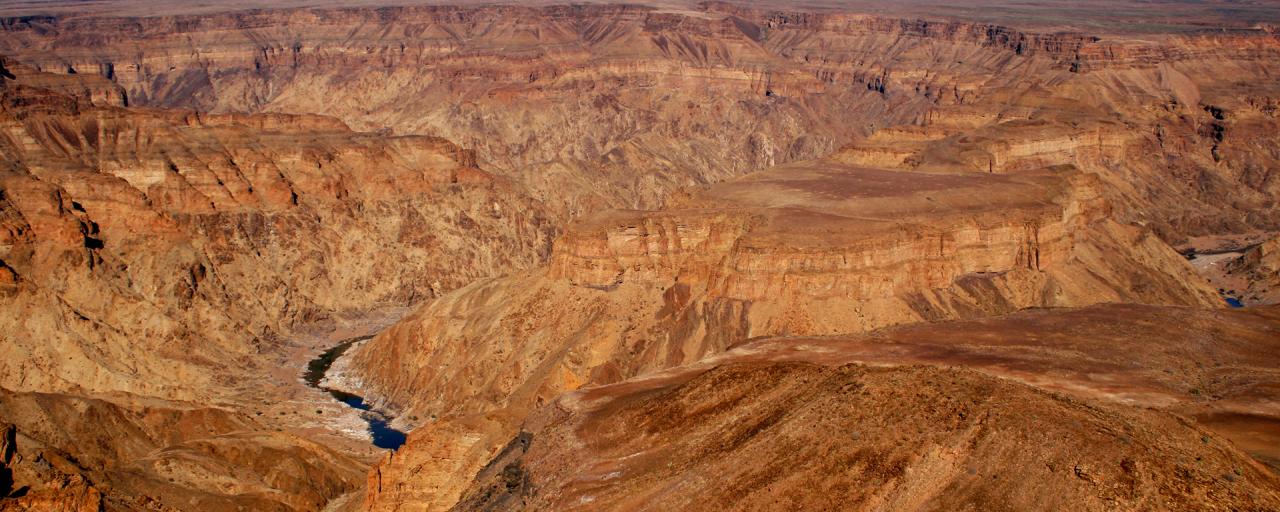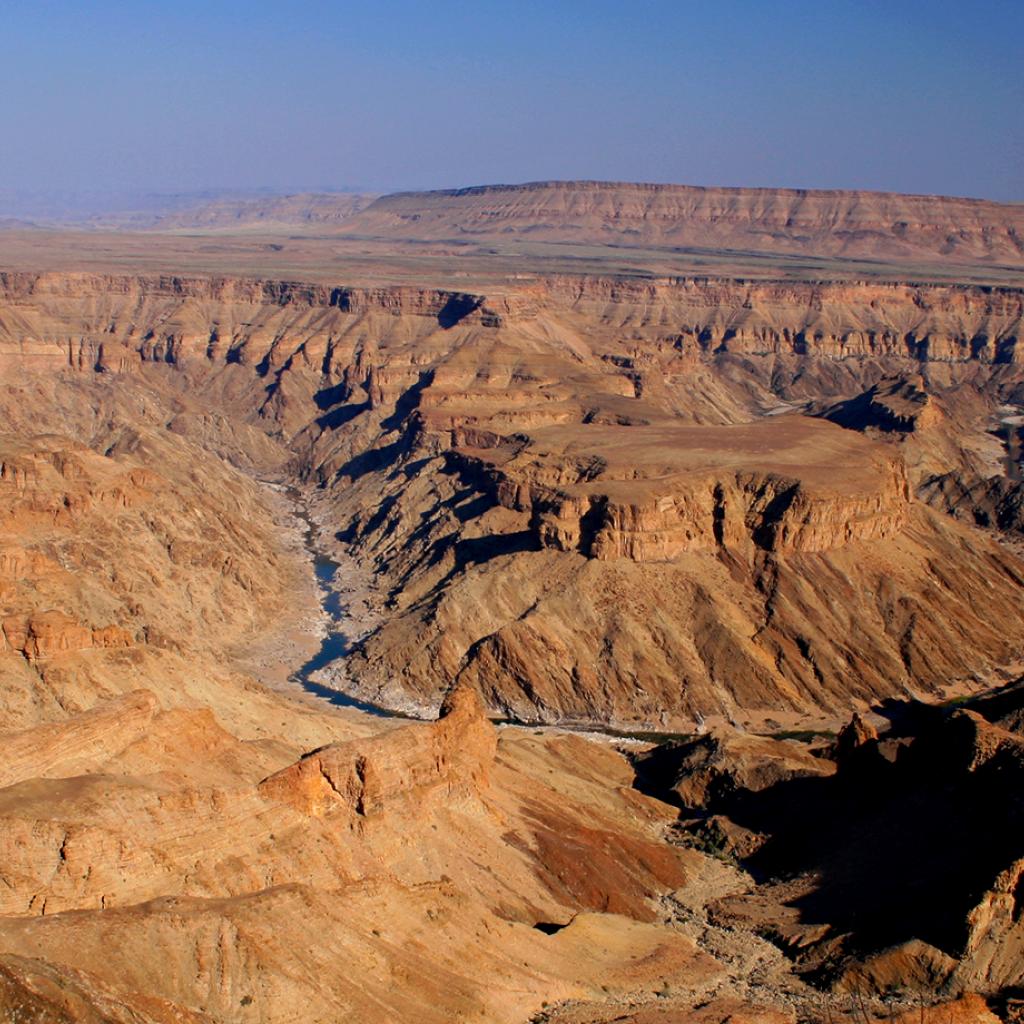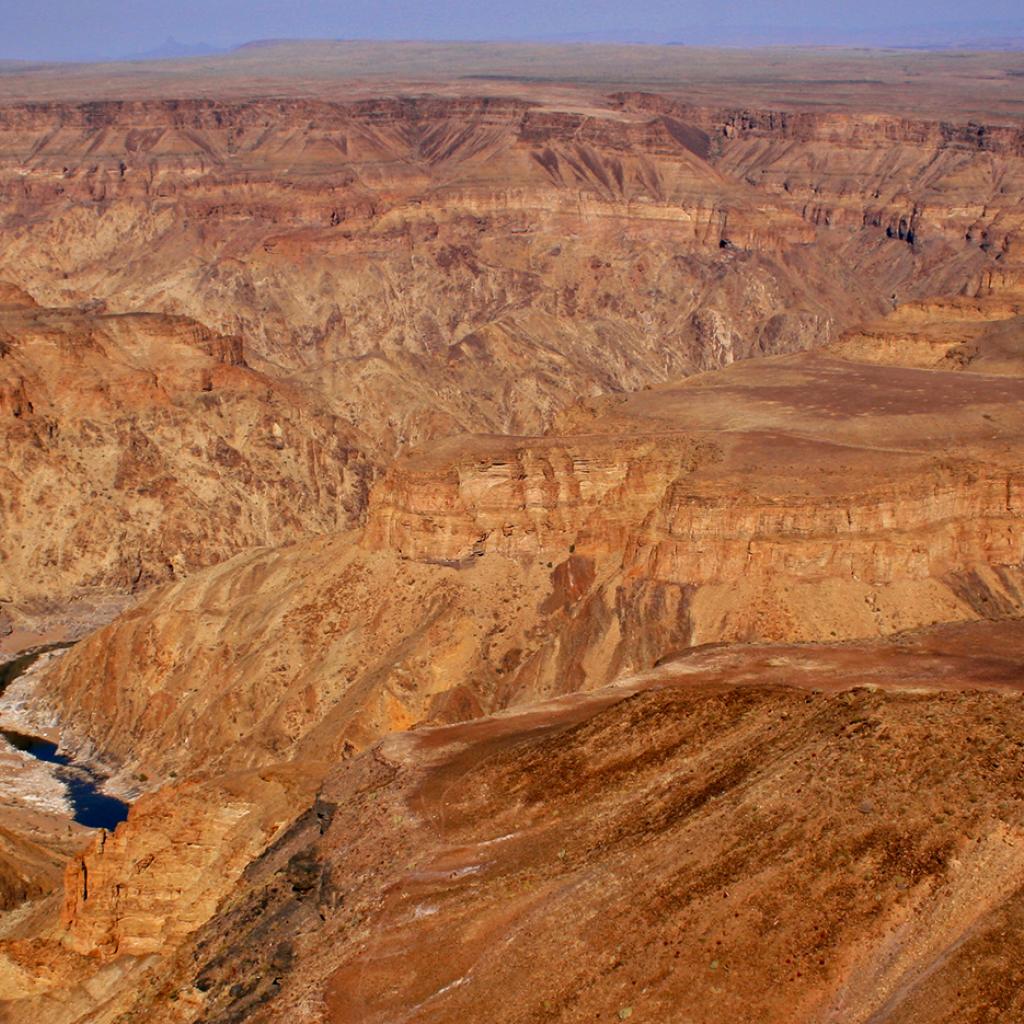The Fish River Canyon Hiking Trail is one of the most famous Southern African hiking trails, covering a distance of 86 km on the bottom of the Fish River Canyon; participating to this trek means discovering the extraordinary beauty of the gorge and its many species of flora and fauna.
The starting point is located in Hobas, while the path ends at Ai-Ais and usually the trail lasts 5 days; the path is feasible only in the Southern hemisphere winter, in the months from May to August and 40 people per day are expected, limit to minimize the environmental impact.
This area is in fact protected since 1962, when the canyon was recognized and defended as a national monument, and in 1969, the whole area has become a magnificent National Park.
Along the path you have the opportunity to admire the bizarre shapes of the rocks smoothed by water, to remain astonished by the extraordinary grandeur of the canyon walls and to spot the rich fauna of the area: the Hartmann’s mountain zebra, the Klipspringer antelope, the rock hyraxes, the steenboks, the oryx and the springboks, the jackals, the brown hyenas, the bat-eared foxes, and if you are very lucky, leopards.
This trek is one of the most frequented by birdwatchers, along the way you may spot many species of birds such as vultures, ospreys, several species of common kingfishers, pelicans and herons and other water birds, especially during the least dry months when the river waters are abundant.
The trek starts from the Northern viewpoint of the Fish River Canyon, Hobas, from here the descent into the gorge begins, this is the most difficult path to deal with and you have to be very careful; once you arrive at the bottom of the track it continues without ever straying from the river and crosses rich wilderness areas of vegetation characterized by narrow passages with boulders and a soft sand or gravel bottom.
The route ends at the hot springs of Ai-Ais, that literally means 'burning water' in the Nama language and refers to the natural hot springs that bubble up in this place.
All along the route there are several points that can be chosen to camp or where just to have a break at a scenic and unspoiled place, such as at the sulfur pools of Palm Springs, the mini 'Table Mountain' or the Three Sisters rock towers.
You need to pay close attention to the many reptiles that may be encountered; in this area in fact live the Cape cobra and the black spitting cobra, both species are very poisonous.
The semi-desert climate of the area creates a sparse vegetation, the plants present have adapted to survive periods of drought, also extended; here you will find many succulent plants including the Aloe Dichotoma or quiver tree that blooms between May and July; this is a species of aloe widespread in South Africa and Namibia and the name of quiver tree refers to the fact that its branches and its leaves are used by Bushmen to build the quivers for their arrows.
In the canyon area you can see some examples of wild horses of Namibia, they are the descendants of herds that German settlers abandoned in the desert after World War I, among the settlers we remember the Lieutenant Thilo von Trotha, who was killed in 1905 during a clash between the German soldiers and the Nama population and is buried along the trekking path.





